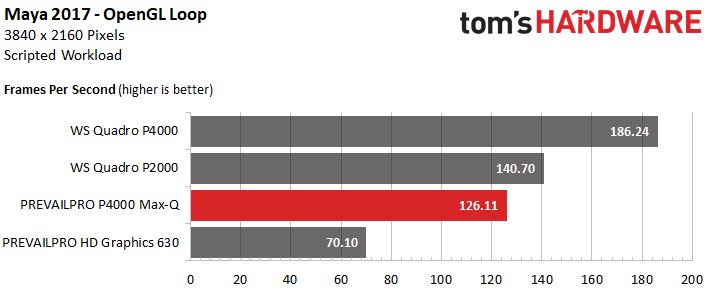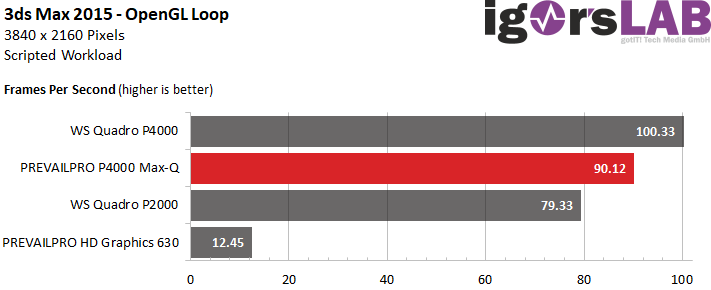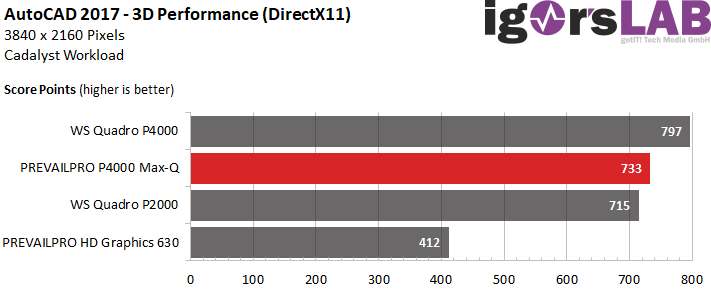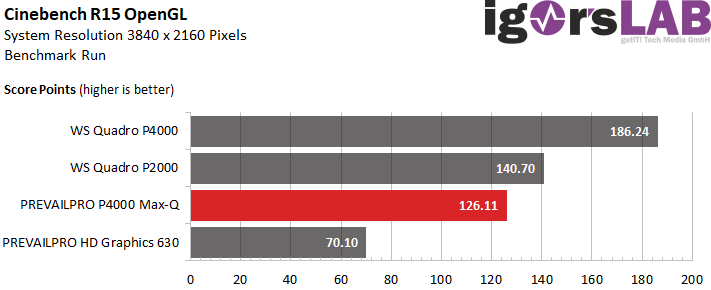But we also don't want to be unfair and now we're still questioning what would happen if the Quadro P4000 Max-Q were to operate almost unchecked in the notebook. Then the dedicated Quadro P2000 is clearly behind in some cases.
If you let a finished, rather complex scene rotate around itself in Maya 2017, the mail goes off and the mobile quadro lies exactly between the two dedicated maps of the PC.

Also in the 3ds Max you can see that the mobile Quadro P4000 Max-Q tends more towards the dedicated Quadro P4000, because the CPU load is even lower than in Maya 2017.

The DirectX part in AutoCAD is not a challenge for the graphics as such, which you can see from the pretty good result of the Intel graphics. Here, the one thread with up to 80% CPU load pushes itself somewhat negatively into the foreground of the action.

The OpenGL benchmark of Cinebench R15 is even more extreme, whereby we for once identify the drivers as "guilty", because this time it will probably not be the CPU. We have already written about "dead-optimized" standard benchmarks and it is once again a reason to omit such applications better. In the end, you only cheat on everyone involved, including your own person.

Intermediate conclusion
The graphics performance of the Quadro P4000 Max-Q mobile is appropriate, but stands and falls with the Intel Core i7-7700HQ used. If the CPU is too strong in the game, the "normal" Intel Core i7-7700T manages to launch even a nominally weaker Quadro P2000 past the mobile graphics and forward with a gesture of nonchalance. But to be fair, a notebook is not a PC and the clocks are always ticking a little differently.
- 1 - Einführung, technische Daten und Details
- 2 - Tear Down, Komponenten und Kühlsystem
- 3 - Benchmarks: 2D und CPU-lastige Szenarien (Compute Rendering)
- 4 - Benchmarks: Komplexe Workloads und Suiten
- 5 - Benchmarks: Grafik-lastige 3D-Szenarien (OpenGL)
- 6 - Leistungsaufnahme, Laufzeit und Geräuschentwicklung
- 7 - Temperaturen, Takt und Infrarotmessung
- 8 - Zusammenfassung und Fazit

































Kommentieren